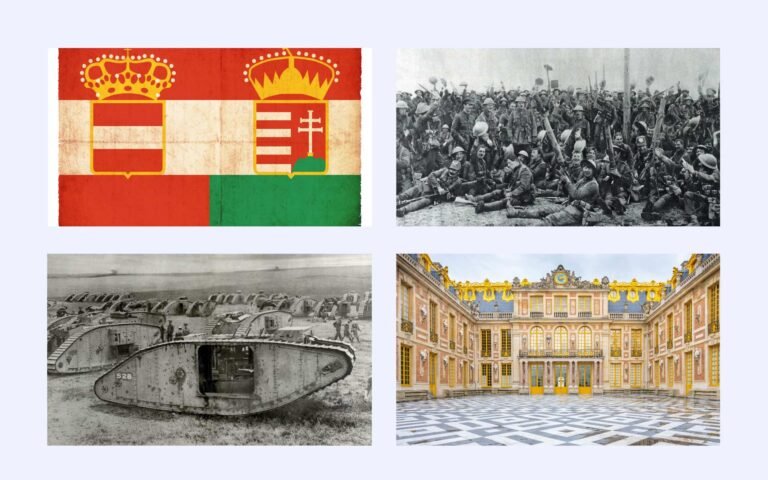The Treaty of Versailles was the peace agreement signed on June 28, 1919, officially ending World War I. It was signed at the Palace of Versailles in France, specifically in the Hall of Mirrors, and primarily involved the Allied Powers and Germany, the principal Central Power defeated in the war.
The treaty included numerous articles outlining the terms of peace, punitive measures for Germany, and territorial changes.
Key Articles and Provisions
1. War Guilt Clause (Article 231)
- Germany’s Responsibility for the War: This article placed full responsibility for the war on Germany and its allies, stating that Germany was to accept “the responsibility of Germany and her allies for causing all the loss and damage” during the war. This clause served as the foundation for the reparations that Germany would be required to pay.
2. Territorial Changes (Articles 42-44, 119-159)
- Loss of Territory: Germany lost significant territories as a result of the treaty.
- Alsace-Lorraine was returned to France.
- Saar Basin was placed under the administration of the League of Nations and later to be decided by a plebiscite.
- Poland was re-established as an independent nation, and West Prussia, Posen, and Upper Silesia were ceded to Poland.
- Danzig was declared a free city.
- Eupen-Malmedy was ceded to Belgium.
- Northern Schleswig was transferred to Denmark.
- The colonies of Germany (in Africa and the Pacific) were distributed to the Allied Powers as mandates, primarily to Britain, France, and Japan.
3. Military Restrictions (Articles 159-213)
- Disarmament: Germany’s military capacity was severely restricted.
- The German army was limited to 100,000 men.
- Conscription was banned.
- No air force, no submarines, and only a limited number of naval vessels (six battleships) were allowed.
- Rhineland was to be demilitarized to act as a buffer zone between Germany and France.
4. Reparations (Article 231 and subsequent provisions)
- Payment of Reparations: Germany was required to pay reparations for the damage caused during the war. The amount was to be determined later, but the total reparations imposed on Germany were set at 132 billion gold marks (around $33 billion at the time).
5. League of Nations (Articles 1-26)
- Establishment of the League of Nations: The treaty called for the creation of the League of Nations, an international organization aimed at maintaining peace and preventing future conflicts. Germany was initially excluded from the League but was later admitted in 1926.
6. Recognition of New Nations and Boundaries
- Several new countries were created or had their boundaries adjusted:
- Czechoslovakia and Yugoslavia were established.
- Austria-Hungary was dismantled into separate nation-states, and Hungary and Austria were restricted in their military capabilities.
- The Ottoman Empire was broken apart, and new mandates were created in the Middle East, including Iraq, Syria, Lebanon, and Palestine.
7. Economic Clauses
- Germany’s ability to engage in trade was restricted, and its economic activities were controlled to ensure reparations payments.
- The Allied Powers sought to weaken Germany economically, although some provisions of the treaty, like the economic blockade, would have long-lasting negative effects on Europe’s recovery.
Conclusion
The Treaty of Versailles was a complex and controversial document that reshaped the political landscape of Europe and the world. The harsh terms imposed on Germany, especially the War Guilt Clause, contributed to widespread resentment and economic hardship, which eventually led to the rise of Adolf Hitler and the outbreak of World War II.
The treaty’s failure to create lasting peace, combined with the absence of the United States from the League of Nations and the continuing economic instability in Europe, set the stage for further conflict in the 20th century, resulting in the Second World War.



